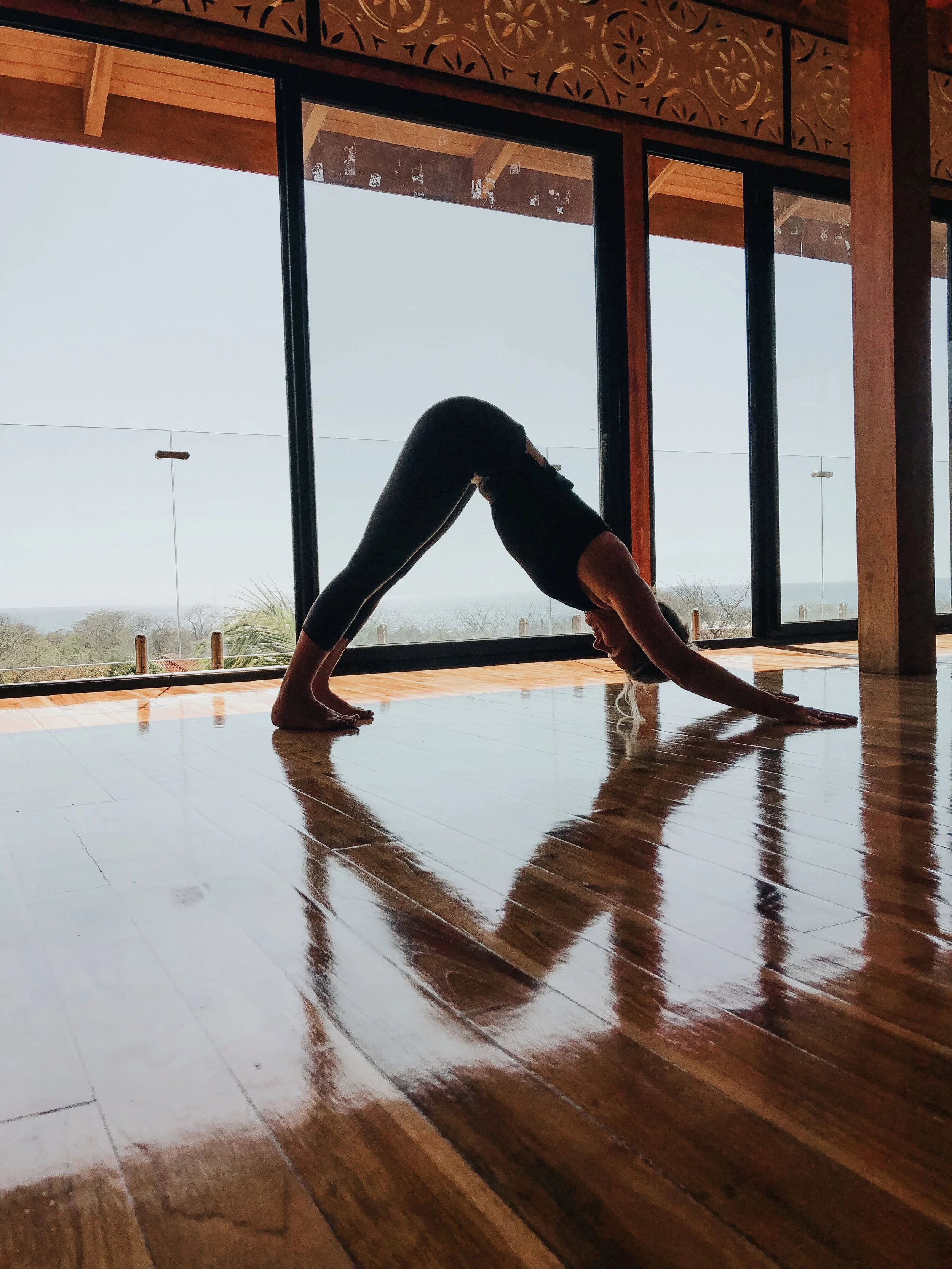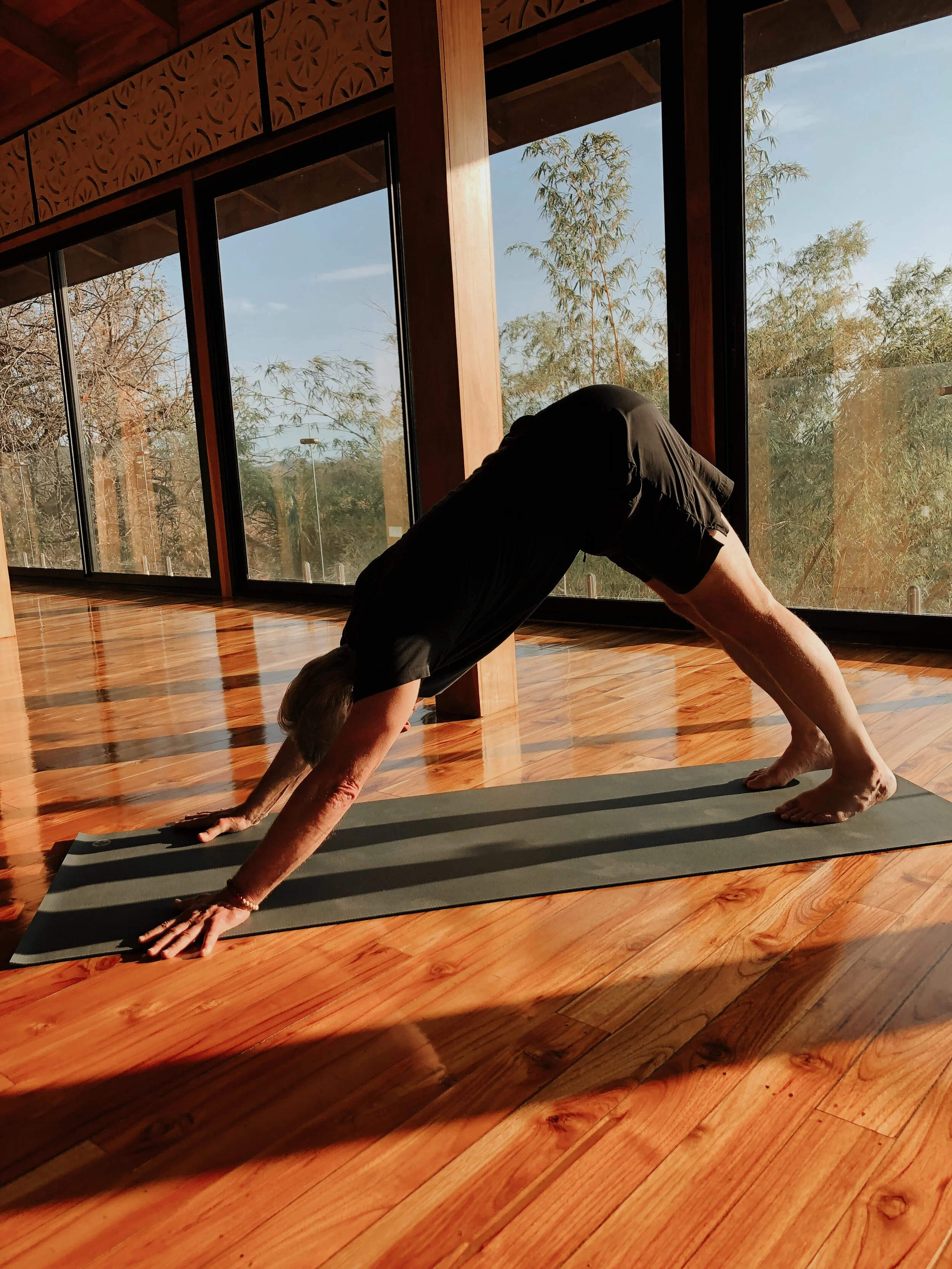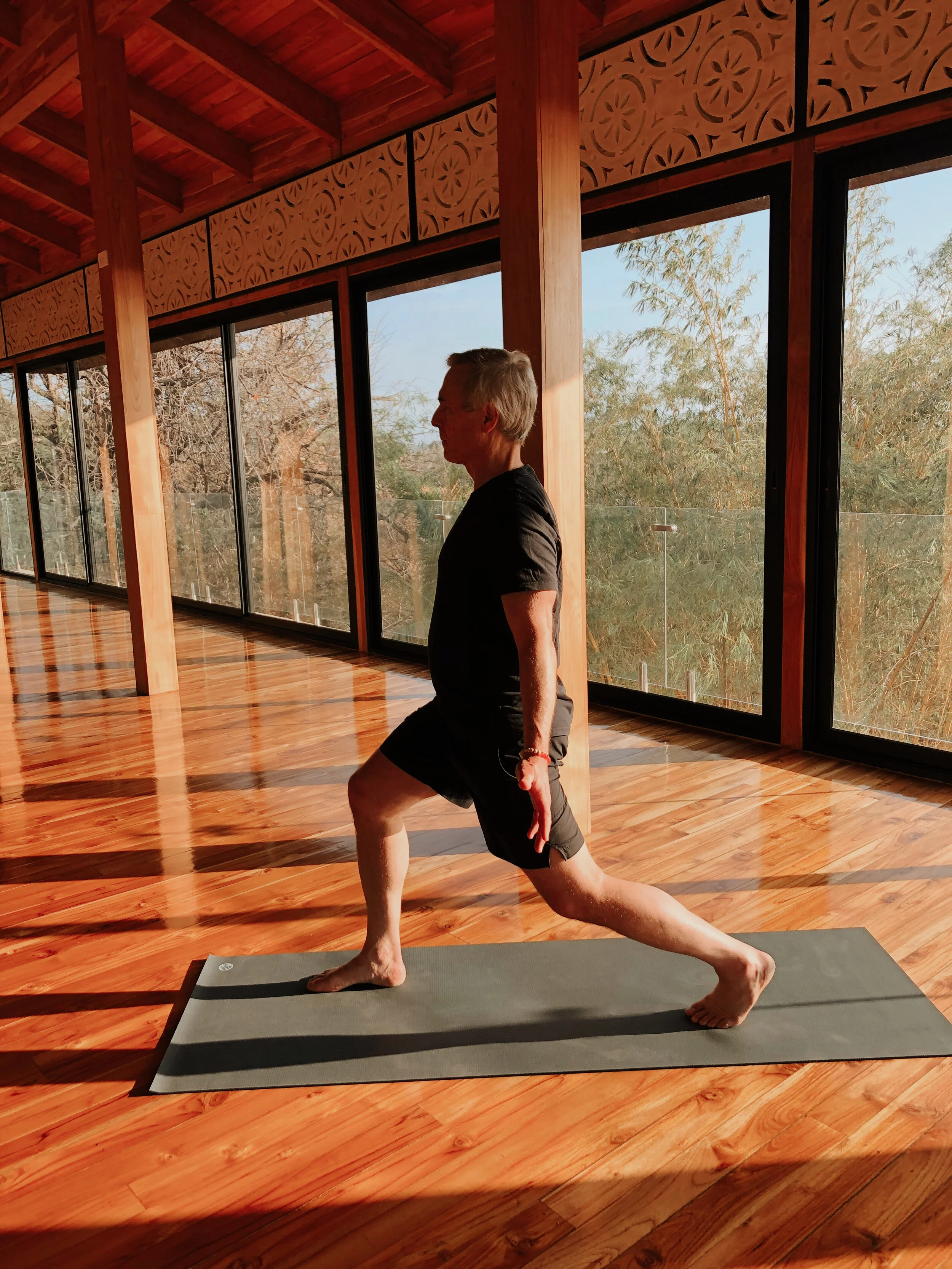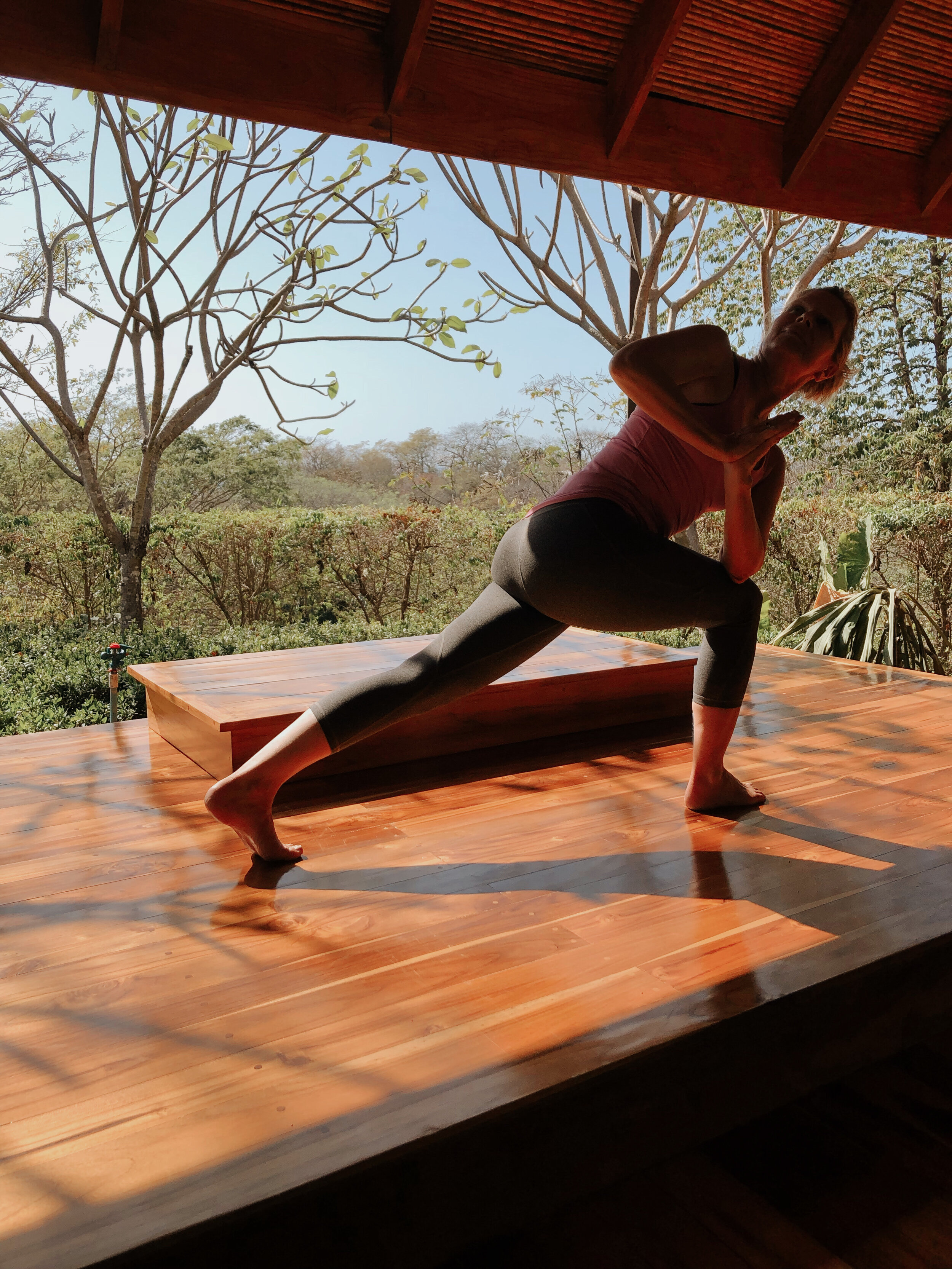Last December when my son, Duncan, and his girlfriend, Michelle, were home for the holidays we were reviewing alignment in a number of poses like Crescent Lunge & Downward Dog. It lead to their question, “which poses do I anteriorly tilt the pelvis & which do I posteriorly tuck? And will you please do a blog post on it for reference.”
Let’s first take a giant step back and understand what these concepts mean or even better yet feel like. The pelvis moves on the thigh bone and this union creates the hip joint. Some have more mobility in this joint and others less. It becomes more complicated because there is front/back and side to side movement. We won’t even get into the internal & external rotation of the thigh bone in the pelvis! Take a moment and lay down on your back with knees bent and feet on the floor. Hold your hands on your outer hips. Press your low back into the floor then arch your low back off the floor. Can you feel when you flatten your back how the pelvis tilts in a posterior tuck and the front of the hips lift towards the ribs? And when you arch your back there is a drawing up of the sitting bones as the front of the pelvis spills forward towards the thigh bones. If you do not feel much movement practice this daily in slow rotations feeling the movement of the pelvis and articulation of the spine 15 to 30 times. You will increase mobility and it will enhance your understanding of how to move in your yoga postures.
The most common posture with an anterior tilting forward of the pelvis is Downward Facing Dog. If you look at the pose it is simply Mountain Pose folded in half. To enable the spine to lengthen down towards the floor the student must lift the sitting bones high. If the hamstrings or low back is restricted then the pelvis tucks and the back is hunched. It is then necessary to adapt a variation and bend the knees so the pelvis can lift with greater ease.
Other forward folding postures like Down Dog with the anterior tilt of the pelvis are Uttanasana (standing forward fold), seated forward folds and standing folds like Pyramid. I also believe that twists from Chair or High Crescent need to begin with the pelvis spilling forward and then the front core contracting.
Perhaps in a yoga class you’ve heard the cue, “tuck your tailbone”. This is the Posterior tuck of the pelvis. It is often done in conjunction with the lifting of the chest or pressing of the heart forward. The end result is an extension of the spine while maintaining its structure (natural curve of the cervical or neck with the lumbar or low back).
Remember when you were on your back and flattened the spine to the floor and the front of the pelvis lifted? Do this action when in poses like Chair, Crescent or Warriors 1 & 2. In Chair Pose this helps to lengthen the sides of the waist, low back and it opens the front of the hip of the back leg in postures like Warrior 1, Warrior 2 and Crescent Lunge. Most standing postures (except when the spine is folding forward or twisting) are Posterior tucks as are backbends like Cobra, Upward Facing Dog and Bridge Pose. In a backbend the primary movement or opening is meant through the upper back or thoracic spine. The thoracic & lumbar juncture is perhaps the weakest part of the back and needs to be stabilized by tucking the pelvis and engaging both front core and back (buttocks). Also most of us have more movement in our low back and are upper back is tight from lifestyle habits. This can potentially result in excessive movement of the lumbar spine compensating for the thoracic and that can trigger back pain. Yikes! So you can see this is serious stuff!
What I recommend is practicing these movements and poses at home as an experiment or investigation. There can be some degree of understanding in a group class, but yoga is intimate. Practicing yoga asanas is an active form of meditation so that you can better understand how your body moves (or perhaps doesn’t). When I teach large group classes opposed to smaller private classes the most I can do is use words to direct the action with an occasional demonstration. Yoga is about change and as a teacher it is not always easy to support this in a large group setting. So it is up to you to get on your mat at home. You will be your best teacher! And as I often say after class, “please ask me specific questions about your pose”. I am here to help.
Namaste







